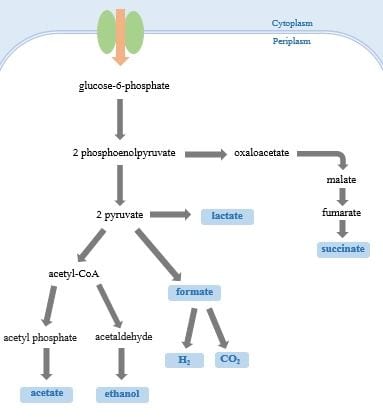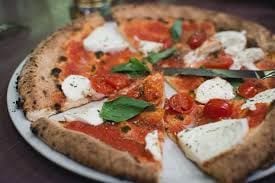Food Science – Fermentation
Introduction
Why would I want to eat a soured dough bread? Simple…they are delicious. Sourdough breads are made by the fermentation of dough using naturally occurring lactobacilli and yeast. Sourdough breads have a mildly sour taste not present in most traditional breads made with baker’s yeast. Sourdough Breads have better inherent long term keeping qualities than other breads because of the lactic acid produced by the lactobacilli. Yeast uses sugar as energy and releases carbon dioxide and ethanol as waste. Yeast and fermentation have been used for thousands of years as the leavening process when making bread.
Task
You will explore the process of fermentation and then you will create either a regular Sourdough Starter or an Amish Friendship Bread Starter. One is sweet, one is savory. You get to decide which you prefer to create.
You will then create a classic Margherita Pizza using a yeast crust recipe.
Process
Task 1 – What is Fermentation
What is fermentation?
Fermentation is an anaerobic process in which energy can be released from glucose even though oxygen is not available. Fermentation occurs in yeast cells, and a form of fermentation takes place in bacteria and in the muscle cells of animals.
In yeast cells (the yeast used for baking and producing alcoholic beverages), glucose can be metabolized through cellular respiration as in other cells. When oxygen is lacking, however, glucose is still metabolized to pyruvic acid via glycolysis.The pyruvic acid is converted first to acetaldehyde and then to ethyl alcohol.The net gain of ATP to the yeast cell is two molecules the two molecules of ATP normally produced in glycolysis.
Yeasts are able to participate in fermentation because they have the necessary enzyme to convert pyruvic acid to ethyl alcohol.This process is essential because it removes electrons and hydrogen ions from NADH during glycolysis. The effect is to free the NAD so it can participate in future reactions of glycolysis. The net gain to the yeast cell of two ATP molecules permits it to remain alive for some time. However, when the percentage of ethyl alcohol reaches approximately 15 percent, the alcohol kills the yeast cells. 
Yeast is used both in bread and alcohol production. Alcohol fermentation is the process that yields beer, wine,and other spirits. The carbon dioxide given off during fermentation supplements the carbon dioxide given off during the Krebs cycle and causes bread to rise.
What is glycolysis?
Glycolysis is the process in which one glucose molecule is broken down to form two molecules of pyruvic acid. Glycolysis is the first of the main metabolic pathways of cellular respiration to produce energy in the form of ATP.
What is the Krebs cycle?
The Krebs cycle uses the two molecules of pyruvic acid formed in glycolysis and yields high-energy molecules of NADHand flavin adenine dinucleotide (FADH), as well as some ATP.
The Krebs cycle occurs in the mitochondrion of a cell. This sausage-shaped organelle possesses inner and outer membranes and, therefore, an inner and outer compartment. The inner membrane is folded over itself many times; the folds are called cristae. They are somewhat similar to the thylakoid membranes in chloroplasts. Located along the cristae are the important enzymes necessary for the proton pump and for ATP production
Your task is to create a recipe for Glycolysis and the Kreb’s Cycle using a cooking show format, you will post a video showing your demonstration. Here is an example of what I am looking for Scientist Chef Presents Glycolysis and Scientist Chef Kreb’s Cycle pretty boring, but it gets the point across.
Your recipe must be written with ingredients and instructions along with your video.
Watch the Amoeba Sisters video on Fermentation and cellular respiration to begin to understand the processes involved in making a good sourdough starter. You may want to take notes on this video.
Task 2 – Ready, Set, Starter
Let’s take a look at the process of making Sourdough Bread. Watch the Secrets of Sourdough: Science of the SPOT Traditional Sourdough bread is not sweet it is savory and has a remarkable sour tang. San Fransisco has mad a mark on the sourdough industry and claims to be where the dough originally got its start.
 Amish Friendship bread is basically a Sourdough Bread that has been sweetened and was very popular in the 1990’s. Is it Amish? Thats really up for debate. There are friendship breads going back in history as long as there has been recorded history. The Amish recipe is the same as the German version called Herman Friendship Cake.…You decide
Amish Friendship bread is basically a Sourdough Bread that has been sweetened and was very popular in the 1990’s. Is it Amish? Thats really up for debate. There are friendship breads going back in history as long as there has been recorded history. The Amish recipe is the same as the German version called Herman Friendship Cake.…You decide
Your task today is to decide on a starter, write up your recipe and get it approved, secure your ingredients, and get your starter going in a ziplock bag.
You will make one starter per team and then, in 10 days, you will each get a starter to develop your own batch at home.
At home, you will need to grow your starter and have at least 5 to give away to earn full credit. You may get your starter going in class and then take it home. At home you will need to feed it, and keep a record of its progress with pictures and journal entries of how you maintained it daily.
Finally you will need to package it with instructions and a gift card and distribute them to your list of lucky starter recipients.
Task 3 – Pizza Time
You will be making a Classic Margherita Pizza (named after Queen Margherita Teresa Giovanni of Italy). We will begin with the crust. Several things contribute to making a good crust.
First, measure your ingredients correctly. Use a dry measuring cup to measure flour and a liquid measuring cup to measure water. Add the water slowly. You want to add enough water to moisten the dough, but not so much that the dough becomes sticky.
Second, knead your dough. Kneading develops the gluten in the dough that traps the carbon dioxide gas formed during fermentation. Most people don’t knead their dough nearly enough. Your dough is ready to set aside to rise when it forms a soft, smooth, round ball that is neither sticky nor dry.
Third, don’t overwork your dough after it rises. Playing with the dough before shaping it makes the dough difficult to shape and the crust tough to chew.
Finally, be careful with your toppings. Too much pizza sauce will make your crust soggy. Too much cheese will make your crust greasy.
Classic Margherita Pizza
Ingredients
2 1/2 c. plus 1/2 c. flour
1 package (1/4 oz) yeast
2 1/2 tsp salt
2 tsp sugar
1 c. warm water (115 – 125 degrees Fahrenheit)
2 Tbsp plus 1 tsp Olive Oil
1/2 – 3/4 c. pizza sauce
1 1/2 c. mozzarella cheese, grated
1/4 c. basil, slivered
Procedures-Day 1
1. In a large mixing bowl, combine 2 1/2 c. flour, yeast, salt, and sugar. Stir until well blended.
2. Add the water and 2 Tbsp olive oil to the flour mixture and stir with a wooden spoon until a rough dough forms.
3. Dust a clean work surface with about 1/4 c. of the remaining flour. Dump the dough onto the surface.
4. Knead the dough, flouring your hands and the work surface and the surface of the dough as needed. Continue kneading the dough until it forms a smooth, elastic ball. About 10 minutes.
5. Wipe out the mixing bowl and grease it with the remaining 1 tsp olive oil. Put the dough in the bowl and cover the bowl tightly with plastic wrap. Label the bowl with Group #, Date, and Class Period and place in the refrigerator.
Procedures-Day 2
1. Adjust the oven rack to its lowest position. Preheat the oven to 425 degrees Fahrenheit
2. Lightly dust a clean work surface with about 1/4 c. of flour. Dump the risen dough onto the work surface.
3. Punch the dough into the desired round shape of a pizza, approximately 10 – 12 inches in diameter, and transfer to a round baking pan.
4. Top the pizza dough with pizza sauce, mozzarella cheese, and slivered basil.
5. Bake the pizza until the cheese is bubbling and the crust is browned. about 12 – 15 minutes.
6. Carefully remove the pizza from the oven using oven mitts. Transfer to a cutting board. Cut the pizza into 8 pizzas.
Evaluation
Use the rubrics below to guide your process. Task two is a long term project. You must start and keep a journal, including photos of your process and turn that in with your end product. If you would like to start a Blog journal, let me know. A blog is a great way for you to document all of your required journaling as the semester progresses.
Fermentation Cooking Video
Pizza Rubric
Starter Planner
Conclusion
Congratulations! You now have a better understanding of how fermentation occurs and why it is important in the kitchen. Now, go bake something!
